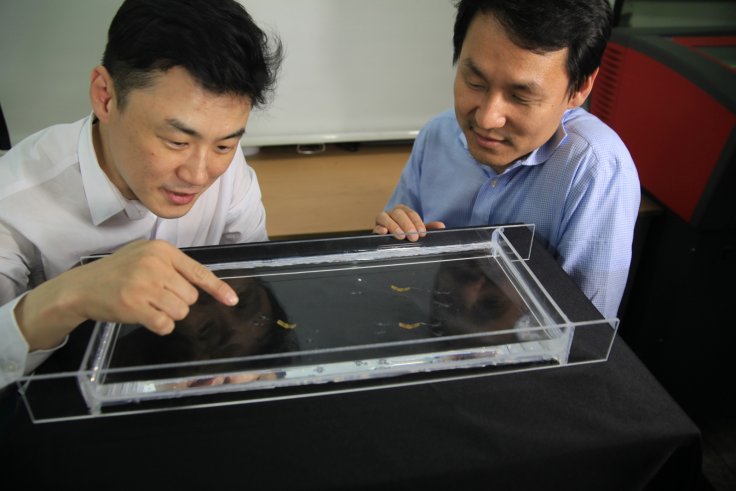Scientists create a robotic insect that can jump on water
Researchers were able to mimic a water strider’s water jumping.
The tiny machine is based on the water strider insects, which are often found skating across the surface of ponds. Feet of the robot were coated with a super repellent material, so as to disable any kind of water from decelerating as soon as the robot ascends the surface of the water. The robot creation is described in the current issue of Science.
Using high-speed cameras to understand how exactly the simple beetles do their tricks, the researchers discovered that the long legs of the water strider accelerate gradually as it launches itself upwards, so that the water surface doesn’t retreat too quickly and lose contact with the legs.
Read the full study, “Jumping on water: Surface tension-dominated jumping of water striders and robotic insects” in Science.
Before this current breakthrough, researchers in 2012 developed a robot that can leap on water without breaking its surface, but that idea what initiated from the basilisk lizard which used paddles to skip on water surface in a drag motion to stay afloat.
When it is powered for a jump, the spring releases slowly, dragging the ends of the robot’s body and its five centimeter insect-like legs downward with force that is gradually increasing without going beyond the limit that the water surface can withstand. All of this achieved without complex cognitive skills. Creatures with relatively low intelligences are capable of extreme locomotion – like flying and swimming – because the “intelligence” is embedded in their morphology. It was first reported by Cho, Wood and Koh in 2013 in the worldwide Conference on Intelligent Robots and Systems.
The striders also sweep their legs inward before each jump, to maximise the amount of time they touch the surface, which increases the force of their pushes.
Nature remains the realm where scientists delve for inspiration for their newest robotic creations. Devised by engineers at the Harvard Paulson School and the Wyss Institute, this ingenious layering and folding process enables the rapid fabrication of microrobots and a broad range of electromechanical devices.
“This robotic technology could probably be used for building [a] large number of robots that can float, and jump on water for surveillance missions”.
Additional co-authors of the study include Gwang-Pil Jung, Sun-Pill Jung, Jae Hak Son, Sang-Im Lee, and Piotr Jablonski.












